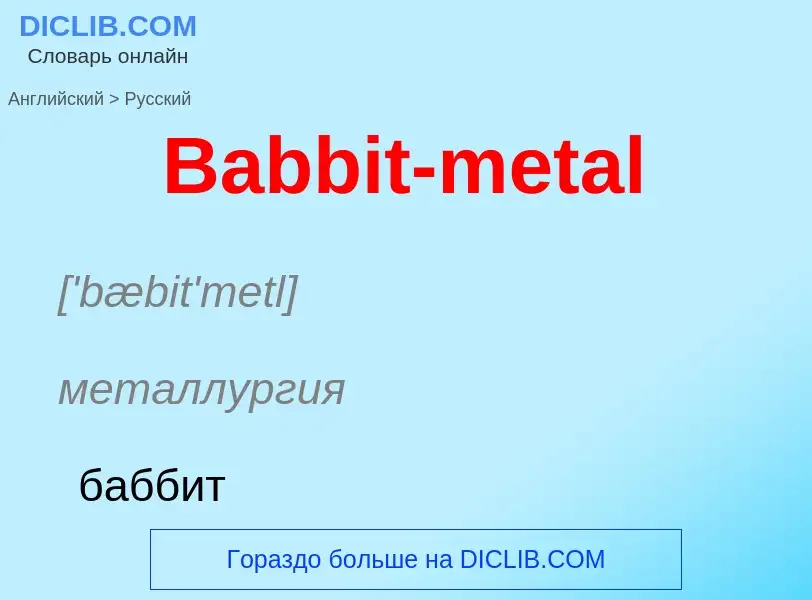Tradução e análise de palavras por inteligência artificial ChatGPT
Nesta página você pode obter uma análise detalhada de uma palavra ou frase, produzida usando a melhor tecnologia de inteligência artificial até o momento:
- como a palavra é usada
- frequência de uso
- é usado com mais frequência na fala oral ou escrita
- opções de tradução de palavras
- exemplos de uso (várias frases com tradução)
- etimologia
Babbit-metal - tradução para russo
['bæbit'metl]
металлургия
баббит
существительное
металлургия
баббит
общая лексика
заливка баббитом
['be(ə)riŋmetl]
общая лексика
подшипниковый металл
синоним
Definição
Wikipédia

Babbitt metal or bearing metal is any of several alloys used for the bearing surface in a plain bearing.
The original Babbitt alloy was invented in 1839 by Isaac Babbitt in Taunton, Massachusetts, United States. He disclosed one of his alloy recipes but kept others as trade secrets. Other formulations were developed later. Like other terms whose eponymous origin is long since deemphasized (such as diesel engine or eustachian tube), the term babbitt metal is frequently styled in lowercase. It is preferred over the term "white metal", because the latter term may refer to various bearing alloys, lead- or tin-based alloys, or zinc die-casting metal.
Babbitt metal is most commonly used as a thin surface layer in a complex, multi-metal assembly, but its original use was as a cast-in-place bulk bearing material. Babbitt metal is characterized by its resistance to galling. Babbitt metal is soft and easily damaged, which suggests that it might be unsuitable for a bearing surface. However, its structure is made up of small hard crystals dispersed in a softer metal, which makes it, technically, a metal matrix composite. As the bearing wears, the softer metal erodes somewhat, creating paths for lubricant between the hard high spots that provide the actual bearing surface. When tin is used as the softer metal, friction causes the tin to melt and function as a lubricant, protecting the bearing from wear when other lubricants are absent.
Internal combustion engines use Babbitt metal which is primarily tin-based because it can withstand cyclic loading.



